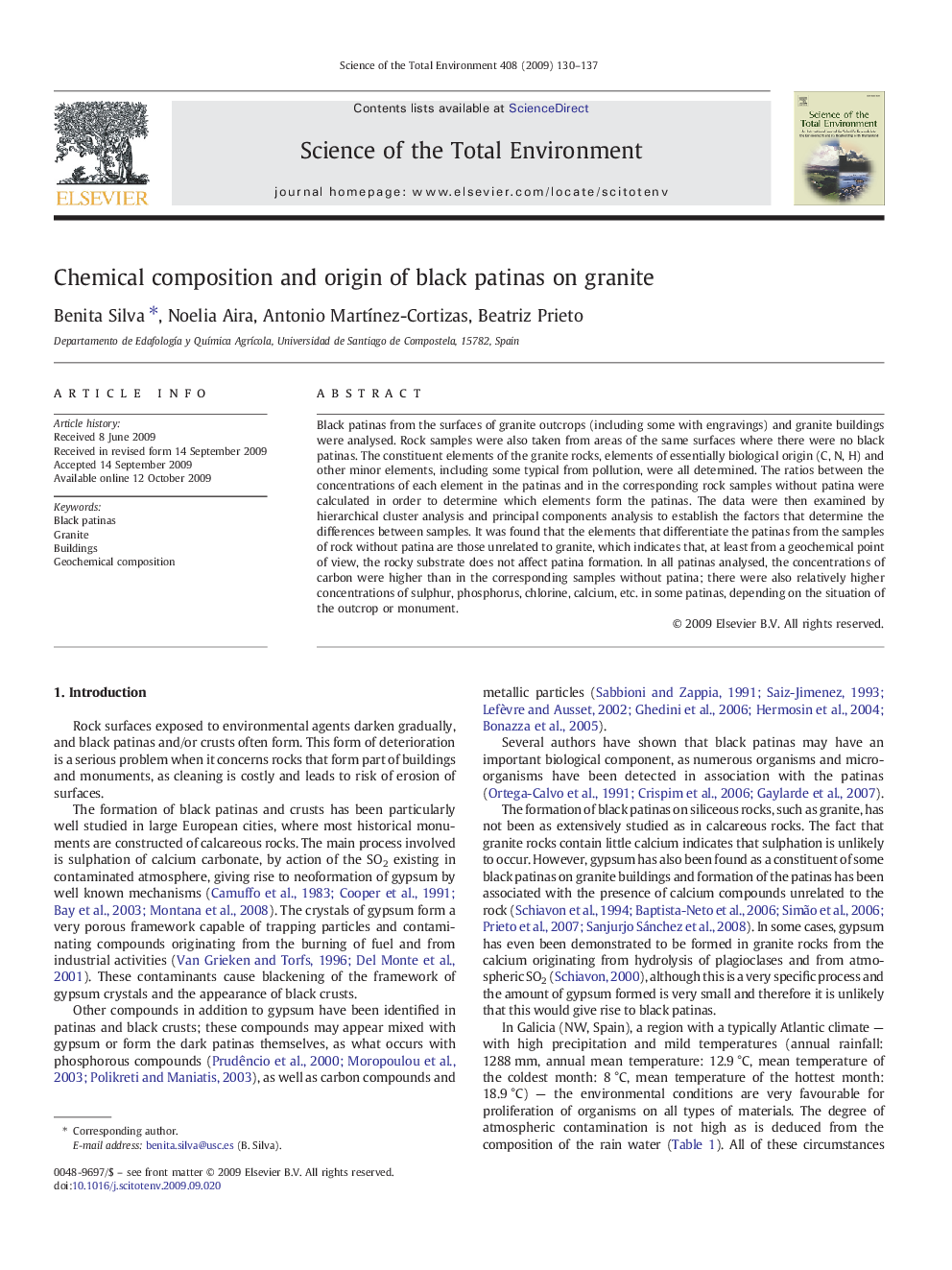| Article ID | Journal | Published Year | Pages | File Type |
|---|---|---|---|---|
| 4432272 | Science of The Total Environment | 2009 | 8 Pages |
Black patinas from the surfaces of granite outcrops (including some with engravings) and granite buildings were analysed. Rock samples were also taken from areas of the same surfaces where there were no black patinas. The constituent elements of the granite rocks, elements of essentially biological origin (C, N, H) and other minor elements, including some typical from pollution, were all determined. The ratios between the concentrations of each element in the patinas and in the corresponding rock samples without patina were calculated in order to determine which elements form the patinas. The data were then examined by hierarchical cluster analysis and principal components analysis to establish the factors that determine the differences between samples. It was found that the elements that differentiate the patinas from the samples of rock without patina are those unrelated to granite, which indicates that, at least from a geochemical point of view, the rocky substrate does not affect patina formation. In all patinas analysed, the concentrations of carbon were higher than in the corresponding samples without patina; there were also relatively higher concentrations of sulphur, phosphorus, chlorine, calcium, etc. in some patinas, depending on the situation of the outcrop or monument.
